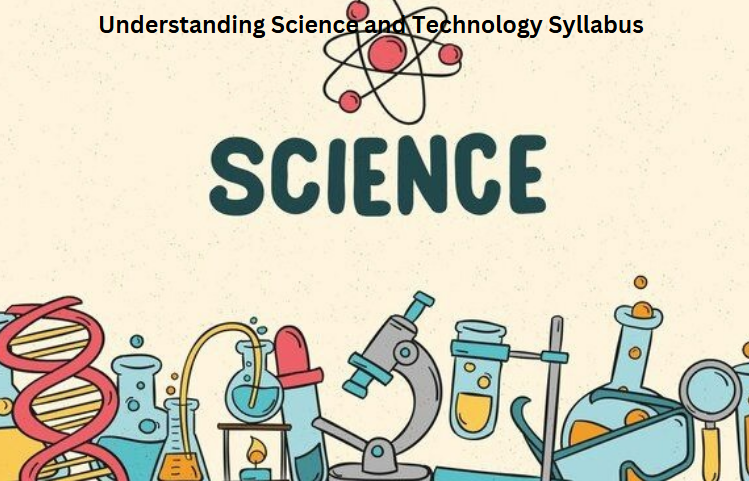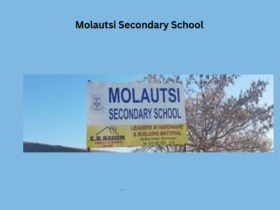
Understanding Science and Technology Syllabus; Science and Technology syllabus PDF: Science and technology are essential subjects that help students understand the world around them and prepare for careers in fields like engineering, medicine, and information technology.
In Tanzania, the Science and Technology syllabus provides a framework for teaching and learning these subjects effectively.
Many students and teachers often look for the Science and Technology syllabus in PDF format for easy access and reference. This blog post will explore what the syllabus contains, its importance, and how students and educators can use it effectively.

What is the Science and Technology Syllabus?
A syllabus is a document that outlines the topics, objectives, and learning outcomes of a subject. The Science and Technology syllabus provides a roadmap for teaching and learning in Tanzanian schools, ensuring that the subject is taught systematically.
The syllabus focuses on building scientific knowledge, critical thinking, and practical skills in technology. It includes guidelines for:
- Learning objectives: What students are expected to achieve by the end of the course.
- Topics: Specific areas of study, such as physics, biology, chemistry, and technology applications.
- Assessment methods: How students’ progress will be evaluated through tests, projects, and practical exams.
Key Topics in the Science and Technology Syllabus
The syllabus covers various subjects that introduce students to fundamental concepts in science and technology. Below are the main topics commonly included:
1. Science Fundamentals
- Basic scientific concepts and principles.
- Understanding the scientific method, including observation, experimentation, and analysis.
2. Biology
- Study of living organisms, including plants, animals, and humans.
- Topics include ecosystems, reproduction, and the human body.
3. Chemistry
- Chemical reactions, compounds, and the periodic table.
- Practical experiments, such as mixing chemicals and understanding their properties.
4. Physics
- Topics such as motion, energy, and electricity.
- Application of physics concepts in real-life scenarios, like designing machines.
5. Technology
- Introduction to information and communication technology (ICT).
- Understanding basic programming, robotics, and the use of technological tools in everyday life.
Benefits of Accessing the Syllabus in PDF Format
The Science and Technology syllabus in PDF format is convenient for both teachers and students. Here’s why:
- Easy to Access: The PDF can be downloaded and viewed on smartphones, tablets, or computers.
- Portable: Students and teachers can carry it anywhere without needing physical copies.
- Searchable: PDFs allow users to search for specific topics or keywords easily.
- Environmentally Friendly: Reduces the need for printed materials.
How to Use the Science and Technology Syllabus
For Teachers
- Plan Lessons: Use the syllabus to create a lesson plan that covers all topics within the academic year.
- Prepare Materials: Identify the resources and tools needed for each topic, including textbooks and lab equipment.
- Assess Progress: Design tests and projects based on the learning objectives outlined in the syllabus.
For Students
- Understand Expectations: Review the syllabus to know what topics will be covered in class.
- Set Goals: Use the syllabus to create a study timetable and set learning targets.
- Prepare for Exams: Focus on the key areas highlighted in the syllabus for better exam performance.
Where to Find the Science and Technology Syllabus in PDF Format
The Science and Technology syllabus PDF can be found through various channels:
- Official Websites: Visit the website of the Tanzania Institute of Education (TIE) or the Ministry of Education.
- School Resources: Some schools provide digital copies of the syllabus to students.
- Educational Platforms: Websites and online libraries dedicated to Tanzanian education often have syllabus PDFs available for download.
Challenges in Using the Syllabus
While the syllabus is an excellent resource, some challenges may arise:
- Limited Access to Technology: Not all students have access to devices for viewing PDFs.
- Outdated Versions: Sometimes, older versions of the syllabus are circulated, causing confusion.
- Language Barriers: The syllabus is often in English, which can be challenging for students not proficient in the language.
Tips for Overcoming Challenges
- Increase Accessibility: Schools can print copies of the syllabus for students without digital access.
- Verify Updates: Ensure you are using the latest version of the syllabus from reliable sources.
- Use Translation Tools: Students struggling with English can use translation apps or seek help from teachers.
Conclusion
The Science and Technology syllabus is a valuable tool for both teachers and students in Tanzania. It provides a clear structure for learning and ensures that all necessary topics are covered systematically.
By accessing the syllabus in PDF format, students and educators can plan, study, and teach more effectively. With a strong foundation in science and technology, Tanzanian students can prepare for successful careers and contribute to national development.
Related articles
- Science Subject in the Tanzanian Syllabus: Building Foundations for Innovation
- Science Subject in Tanzania: An Overview
- Mathematics Syllabus for Primary School in Tanzania-elimuhuru
- History of Mathematics in Tanzania-elimuhuru
- Top 10 Best Private Secondary Schools in Tanzania-Elimuhuru
- Top 50 Best Secondary Schools in Tanzania-Elimuhuru
- Education system in tanzania 2024-Elimuhuru
- Tanzania Education Statistics-Elimuhuru
- Scholarships in Tanzanian Universities-Elimuhuru
- Tanzania school fees: A Guide for Parents and Students
- International School of Tanganyika Fees-Elimuhuru
- Ahmes Secondary School Fees-Elimuhuru









Leave a Reply